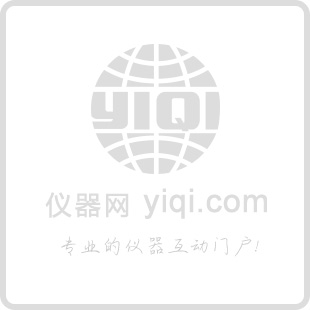| Description |  | Monoclonal Antibody against L1 NCAM |
| Clone |  | 74-5H7 |
| Form |  | Ascites |
| Host |  | Mouse |
| Species Reactivity |  | Mammalian, Chicken |
| IsoType |  | L1 NCAM Monoclonal AntibodyIgG1 |
| [Ab] |  | 2-3 mg/mL |
| Specificity |  | The cell adhesion molecule L1 is a 200-220 kD protein of the immunoglobulin superfamily. It participates in a wide variety of neuronal functions including migration, outgrowth, synaptogenesis and myelination. This monoclonal antibody was raised against purified chick L1, and binds to the L1 cytoplasmic domain at about T1172 (adjacent to the YRSL sorting signal). Phosphorylation of either T1172 or Y1176 strongly inhibits binding of 74-5H7 to the L1 cytoplasmic domain. |
| Uses |  | This antibody is effective in immunoblotting, immunoprecipitation and immunohistochemistry. |
| Suggested Working Dilution |  | The optimal working dilution should be determined for each specific assay condition. This antibody is sold for laboratory research use only, not for human or in-vivo use. Covance antibodies may not be resold or modified for resale without prior written approval.
L1 NCAM Monoclonal AntibodyWestern blot 1:2000*
Immunoprecipitation 1:500
Immunohistochemistry 1:500** |
| Notes |  | *Predicted MW = 200-220 kD
**Recommend using Bouin’s fixative as outlined in the Kamiguchi et al. reference. |
| Storage |  | Store at -20°C. It is suggested that the total volume be divided into useable aliquots upon initial thaw. |
| References |  | H Kamiguchi, KE Long, M Pendergast, AW Schaefer, I Rapoport, T Kirchhausen, V Lemmon. The neural cell adhesion molecule L1 interacts with the AP-2 adaptor and is endocytosed via the clathrin-mediated pathway. J. Neurosci. 18(14):5311-21, 1998.
V Lemmon, KL Farr, C Lagenaur. L1-mediated axon outgrowth occurs via a homophilic binding mechanism. Neuron. 2(6):1597-603, 1989.
PM Yip, CH Siu. PC12 cells utilize the homophilic binding site of L1 for cell-cell adhesion but L1-alphavbeta3 interaction for neurite outgrowth. J. Neurochem. 76(5):1552-1564, 2001. |
| Warranty/Conditions |  | Covance products may not be resold or modified for resale without prior written approval. |
 L1 NCAM Monoclonal Antibody
L1 NCAM Monoclonal Antibody
 L1 NCAM Monoclonal Antibody来自Convance公司产品
L1 NCAM Monoclonal Antibody来自Convance公司产品
 L1 NCAM Monoclonal Antibody
L1 NCAM Monoclonal Antibody
 Monoclonal Anti-NCAM Antibody Antibody
Monoclonal Anti-NCAM Antibody Antibody
 NCAM-L1 Monoclonal Antibody
NCAM-L1 Monoclonal Antibody
![BSS-M-986-100 Mouse monoclonal antibody to Neural Cell Adhesion molecule (<em>NCAM</em>) [ImL-43]: IgG](https://item.yiqi.com/pic/CovPic/4/3344240969708382914-14.png) BSS-M-986-100 Mouse monoclonal antibody to Neural Cell Adhesion molecule (NCAM) [ImL-43]: IgG
BSS-M-986-100 Mouse monoclonal antibody to Neural Cell Adhesion molecule (NCAM) [ImL-43]: IgG
 Monoclonal Antibody to CD56 / NCAM (LT56) (PerCP-Cy™5.5)
Monoclonal Antibody to CD56 / NCAM (LT56) (PerCP-Cy™5.5)
 Monoclonal Antibody to CD56 / NCAM (MEM-188) (PE-Cy™5)
Monoclonal Antibody to CD56 / NCAM (MEM-188) (PE-Cy™5)
 Monoclonal Antibody to CD56 / NCAM (LT56) (PE-Cy™7)
Monoclonal Antibody to CD56 / NCAM (LT56) (PE-Cy™7)
 Monoclonal Antibody to CD56 / NCAM (MEM-188) (PE-Cy™7)
Monoclonal Antibody to CD56 / NCAM (MEM-188) (PE-Cy™7)
 Monoclonal Antibody to CD56 / NCAM (LT56) (PerCP)
Monoclonal Antibody to CD56 / NCAM (LT56) (PerCP)
 Monoclonal Antibody to CD56 / NCAM (LT56) (Pacific Blue™)
Monoclonal Antibody to CD56 / NCAM (LT56) (Pacific Blue™)